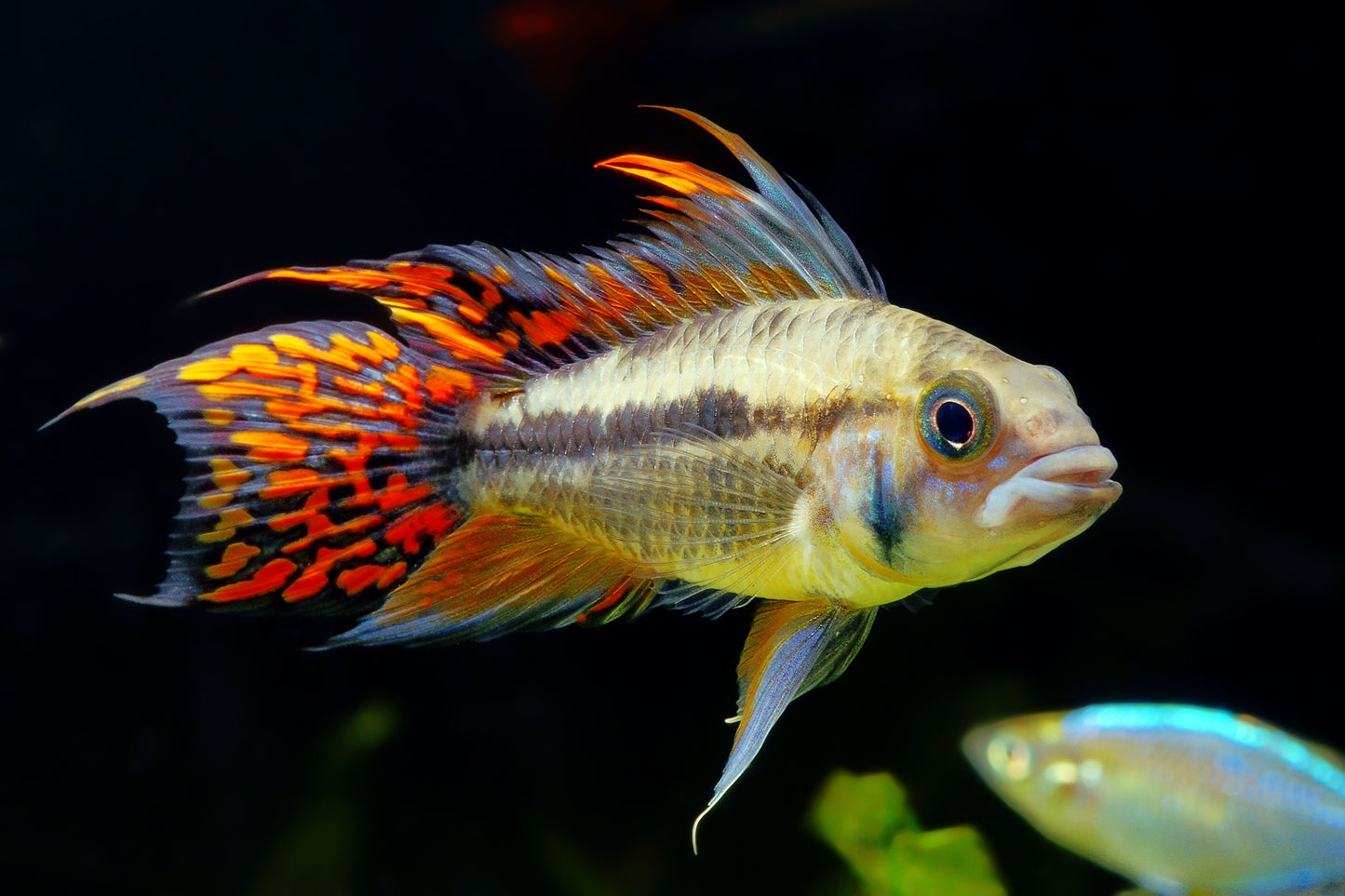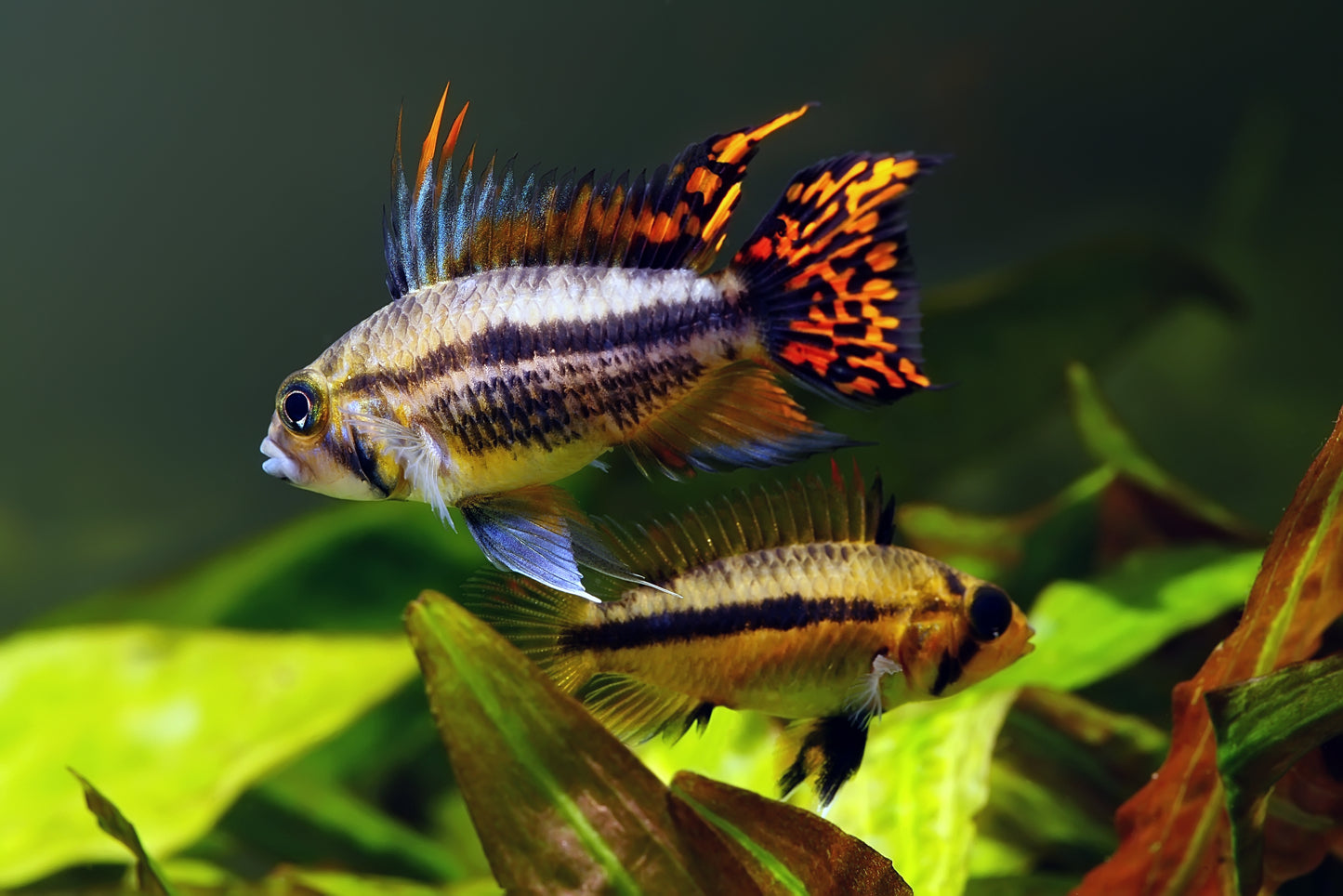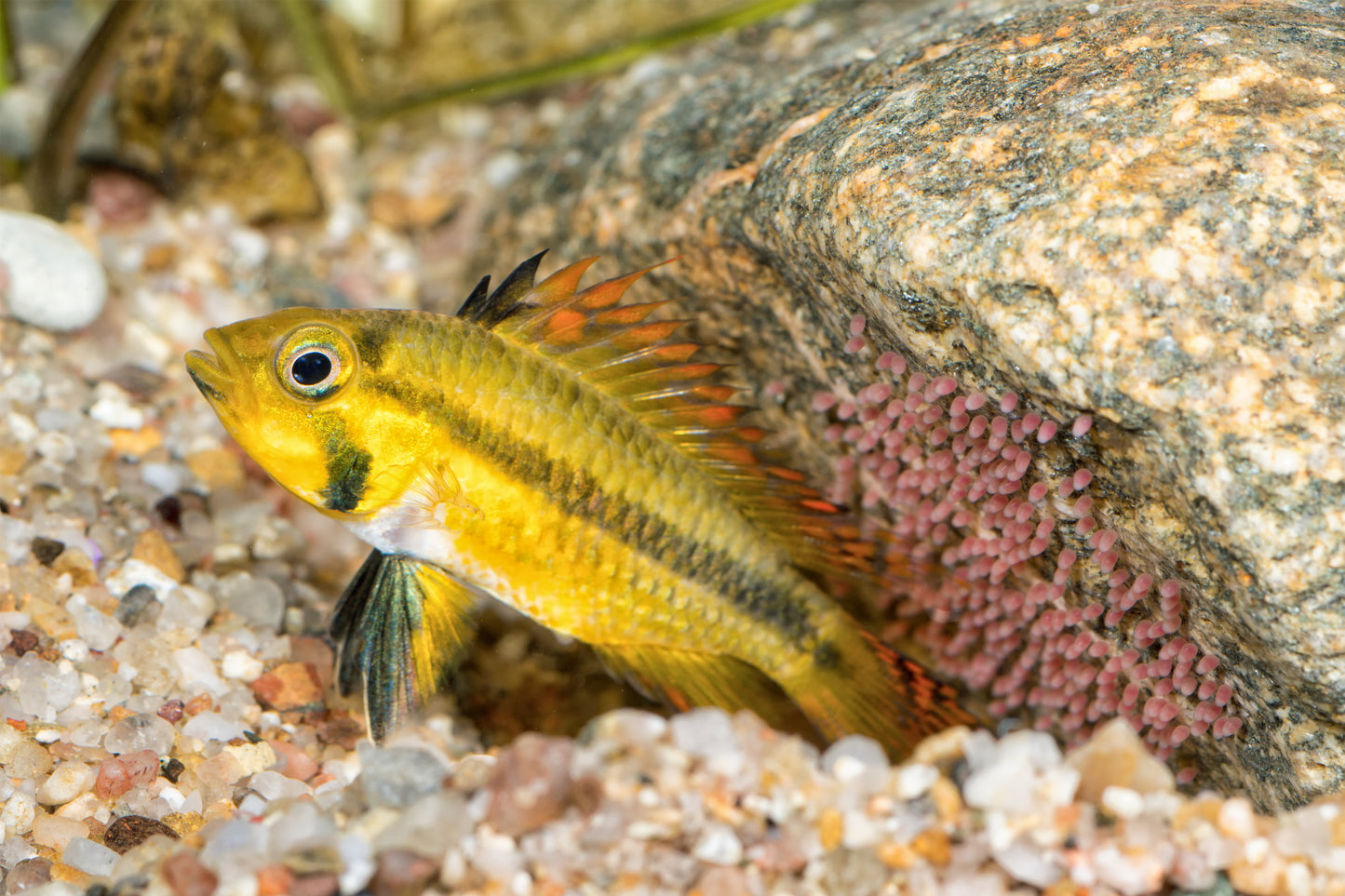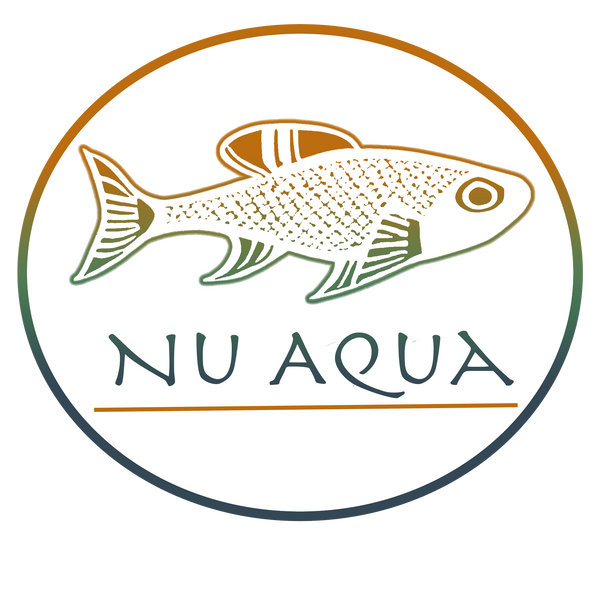Apistogramma Cacatuoides- WILD Peru UNSEXED
$10.99 USD
1
/
of
3
Regular price
$10.99 USD
Sale price
$10.99 USD
Regular price
Unit price
/
per
Couldn't load pickup availability
Shop safely
Secure your shopping experience with various safe and trusted payment methods.
Payment methods
Sold out
The Apistogramma Cacatuoides is a colorful and hardy dwarf cichlid native to slow-moving streams, creeks, and flooded forest areas in the upper Amazon basin of Peru, Brazil, and Bolivia. Commonly called the Cockatoo Dwarf Cichlid or Cockatoo Apisto, it is prized in the aquarium hobby for its brilliant colors, unique fin extensions, and fascinating social and breeding behavior.
Adult Apistogramma Cacatuoides typically reach about 2.5 to 3 inches (6 to 7.5 cm) in length, with males being larger, more vividly colored, and displaying prominent, extended rays on the dorsal and caudal fins. Color varieties include bright reds, oranges, yellows, and blues, with many selectively bred strains available. Females are smaller and more subtly colored, usually showing a yellow body with black markings and less elaborate finnage.
A tank of at least 20 gallons is recommended for a pair or harem. The aquarium should have a soft sand substrate, plenty of hiding places using driftwood, rocks, clay pots, or coconut shells, and dense plantings to mimic their natural environment. Floating plants and subdued lighting help reduce stress and enhance coloration.
Water parameters for the Apistogramma Cacatuoides should include a temperature range of 75 to 82°F (24 to 28°C), a pH between 6.0 and 7.5, and soft to moderately hard water. Regular partial water changes and good filtration are essential for their health.
Feeding Apistogramma Cacatuoides is easy, as they are omnivorous and accept a wide range of foods. Offer high-quality micro pellets, flakes, and live or frozen foods such as brine shrimp, daphnia, bloodworms, and mosquito larvae to enhance color and breeding readiness.
Apistogramma Cacatuoides are generally peaceful but can be territorial, especially during breeding. They do well in community tanks with other small, peaceful species such as tetras, pencilfish, Corydoras, and hatchetfish, but avoid housing them with aggressive or much larger fish.
Breeding Apistogramma Cacatuoides in captivity is straightforward. Females lay eggs in caves or sheltered spots and guard the eggs and fry, while males defend the territory. Provide multiple caves and hiding spots to increase breeding success. Fry can be fed infusoria or newly hatched baby brine shrimp once free-swimming.
Apistogramma cacatuoides (Apistogramma Cacatuoides, Cockatoo Dwarf Cichlid) is a beautiful, charismatic species that brings vibrant color and dynamic social behavior to South American and planted aquariums.



Shopping Safely
At our Shopify store, we prioritize your safety and security. Here's how we ensure a secure shopping experience:
1. Secure Transactions: We use advanced encryption to protect your personal and payment information, ensuring it is safely transmitted and safeguarded.
2. Trusted Payment Gateways: Our store integrates with trusted payment gateways, ensuring your transactions are processed securely and efficiently.
3. Data Privacy: Your privacy is our top priority. We follow strict data protection policies to keep your personal information confidential and secure.
4. Secure Platform: Shopify provides robust security features and continuous monitoring against vulnerabilities, ensuring a safe shopping environment.
5. Verified Merchants: We are a verified merchant on Shopify, committed to providing authentic and high-quality products.
6. Transparent Policies: Our clear return, refund, and shipping policies provide peace of mind, knowing we stand behind our products.
7. Customer Support: Our dedicated customer support team is ready to assist with any concerns or questions you may have.
Shop confidently at our Shopify store, where your safety and satisfaction are our top priorities.
Questions about this product?
Don't be a stranger.
Selling fast!
Get yours while you can.
-
WELL TRUSTEDOver 100k customers
-
SUPER FASTWith Express delivery
-
EXPERT HELPSeven days a week
-
BEST PRICESUnbeatable value



